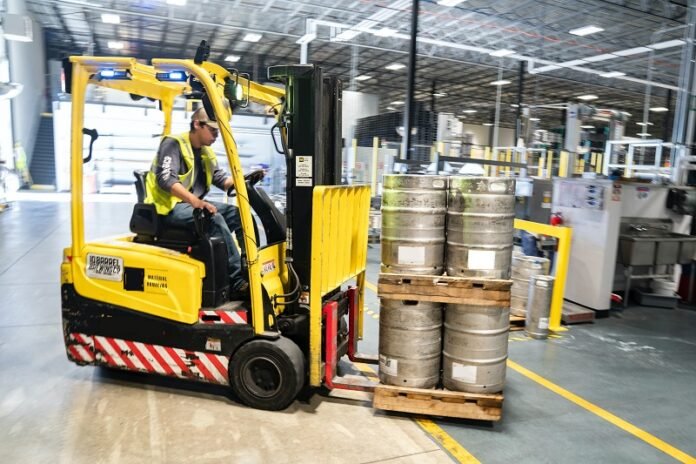Have you ever marvelled at the dexterity of a forklift, or the fastidiousness required in warehouse operations? What about efficiency at ports, where masses of containers are organized and moved with precision? Behind these intricate operations, a revolution has been silently unfolding – the evolution of container mast forklifts.
The forklift, unassuming as it may seem, is the undeniable backbone of the industrial sector. Its unswerving service in warehouses, ports, and industrial settings worldwide is a testament to its importance. However, like any other piece of technology, it too is subject to evolution. But what has brought about this evolution? What does the future hold for these crucial pieces of machinery? Let’s delve into the fascinating world of container mast forklifts and understand the advancements that are reshaping them.
In this blog post, we’ll be unravelling the technological advancements that have led to the evolution of container mast forklifts, their pros and cons, and the way they promise to revolutionize the future of logistics and warehousing.
The Whys And Hows Of Forklift Evolution
Why the need for an evolution, you may ask? The answer lies in the ever-growing demands of the industrial sector. Increased operation efficiency, reduced manpower, enhanced safety measures – these are all constituents of a rapidly progressing industrial world. The forklift has had to adapt in order to meet these demands. This section explores how these demands have shaped forklift technology.
As for the ‘how,’ it all boils down to the integration of smarter technology. Today’s forklifts are more than just lifting machines. They incorporate GPS technology, sensor arrays, and advanced power systems, bringing about a paradigm shift in their operation.
The Make-Up Of Modern Container Mast Forklifts
Lifting containers are no easy task. Modern container mast forklifts are equipped with robust features to handle such heavy loads. Features such as sturdy mast structures, powerful engines, and intelligent control systems have now become the norm.
But it doesn’t just stop with robust features. Modern forklifts are also leveraging automation in their operation – automatic tilt levelling to ensure the load stays level, electric steering for precise handling, and even semi-automated driving functionalities.
Treading The Path Of Sustainability
Another significant evolution in forklift technology is the shift towards sustainability. With an increasing awareness of environmental concerns, there’s a growing emphasis on manufacturing eco-friendly machines. As a part of this shift, electric forklifts are marking their presence, thus reducing the dependency on gasoline and diesel-powered machines.
The journey towards sustainability, however, is not without challenges. Discussing the pros and cons of electric forklifts helps us understand the complexities involved in this transition.
The Pros And Cons Of Modern Forklifts
While all these advancements are indeed impressive, they do come with their own set of pros and cons. The positive aspects include enhanced safety, increased efficiency, and reduction in manpower dependency. However, the downside includes high upfront costs, the necessity for regular software updates, and increased complexity in operations.
In spite of the challenges, the industry is overwhelmingly in favour of continuing the evolution, considering the long-term benefits that come with these advancements.
The Future Of Container Mast Forklifts
What does the future hold for container mast forklifts? Looking at the current trend, the inclusion of AI and IoT seems inevitable. Soon, we might be seeing forklifts that can communicate with each other, predict their own maintenance needs, and make autonomous decisions based on real-time data.
As the industry propels towards this foreseeable future, it also gears up to tackle the challenges that such advanced technology might present.
Conclusion
The journey of container mast forklifts from basic lifting devices to sophisticated machinery is a testament to the progressive nature of technology. While the road ahead promises to be exciting, it is also undeniably fraught with challenges. While the pros far outnumber the cons, there’s an obvious need for strategies to mitigate the potential obstacles in the path of development.
The evolution of the container mast forklift is no less than an industrial revolution. It impacts not just warehouses and logistics, but the broader scope of business efficiency and economics. As we continue to witness this evolution, we can reaffirm our belief in innovation as the cornerstone of progress.








